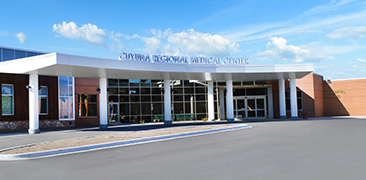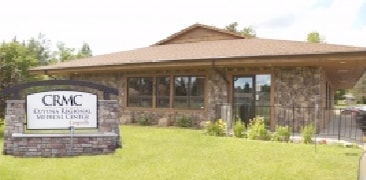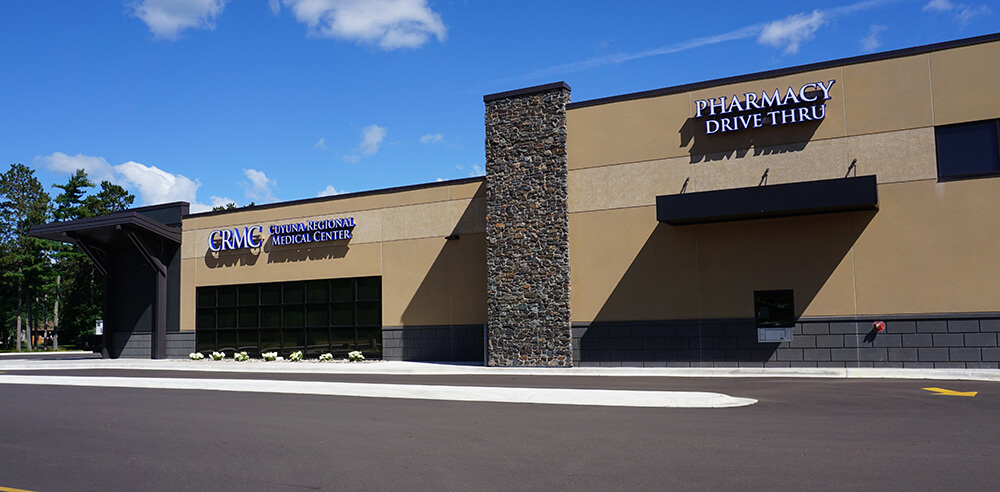*Please note that the below information is intended to provide generalized information to help increase awareness and education about CBT-I. It should not be used as a substitute for thorough, individualized assessment, diagnosis, or treatment by a licensed physician or other professional. Your provider may recommend an approach that differs from the below based on your individualized assessed needs.
Key points
- Anxiety disorders are the most common psychiatric condition seen in primary care.
- Patients may present with unexplained symptoms and be unaware of anxiety as the source.
- Anxiety disorders often go undetected and untreated.
- Screening tools such as the GAD-7 can help.
- Effective treatments are available, though underutilized, prolonging patient suffering.
- Research indicates that patient outcomes are optimal with combined pharmacologic and psychotherapy intervention.
Objectives
- Define anxiety
- Recognize common emotional, physical and cognitive signs and symptoms
- Identify causes
- Cite the prevalence
- Differentiate normal anxiety from disorder
- Understand types of anxiety disorders
- Recognize options for treatment
- Understand ways to support patients and loved ones
What is anxiety?
- Apprehensive anticipation of future danger or misfortune accompanied by feelings of worry, distress, and/or somatic symptoms of tension.
- The focus of anticipated danger may be internal (i.e., having a heart attack) or external (i.e., being humiliated in public).
Emotional Symptoms
- Feelings of apprehension or dread
- Feeling tense
- Feeling jumpy or “on edge”
- Worrying excessively
- Restlessness
- Inability to relax
- Irritability
- Expecting the worst and being hypervigilant for signs of danger
Physical Symptoms
- Pounding or racing heart
- Shortness of breath
- Sweating
- Tremors
- Headaches
- Fatigue
- Insomnia
- Upset stomach
- Diarrhea
Anxious thinking
- Poor concentration
- Mind frequently goes blank
- Overestimate risk or danger
- Underestimate ability to cope
- Catastrophic thinking- anticipating the worst-case scenario
- Jumping to conclusions- negative assumptions without supporting evidence
- Mind reading- presuming negative judgment or reaction by others
- Personalization- interpreting events and reactions as due to self
- Negative filter- magnifying negative details and filtering out positive
- Should statements- thoughts imbued with rigid, unrealistic expectations
- Emotional reasoning- equating emotions as reflecting truth absent evidence (i.e., feeling helpless is viewed as being helpless).
Causes of Anxiety
- Genetics- Anxiety disorders tend to run in families; anxious predisposition/temperament.
- Life events including a stressful or traumatic event such as abuse, death of a loved one, exposure to violence, prolonged illness, and poor overall health.
- Environmental factors including difficult family relationships, lack of adequate social supports, and low-income status.
Prevalence
- The most common mental health concern in the United States
- Estimated 40 million adults in the US (18%)
- 8% of youth
- Most develop before age 21 and persist if untreated
- Women are 60% more likely to be diagnosed (approximate 2:1 ratio)
From Normal to disorder
- Everyone experiences some anxiety.
- Mild anxiety can help us (motivate behavior).
- Disorder is defined by significant distress and/or impairment in functioning.
- Differs from transient, stress-induced, anxiety by being excessive or persistent.
- Interferes with life in significant ways.
- Associated problems include elevated divorce rates, greater unemployment, a diminished sense of well-being, and increased reliance on assistance.
Avoidance
- We are driven to avoid what we fear.
- Safety behaviors- People with anxiety often perform safety behaviors during anxiety provoking situations. These behaviors provide temporary relief from anxiety.
- Avoidance, however, maintains anxiety.
Fight, flight, or freeze response
- A built in physiological mechanism
- An acute stress response to a perceived threat to survival
- Sympathetic nervous system activated to prepare body for intense physical activity
- Amygdala cannot differentiate between a real or perceived threat
- Anxiety produces “false alarms”
Diagnosis
- Rule out a general medical condition cause.
- Rule out a medication/substance-induced cause.
- Rule out better explanation of symptoms by another mental disorder.
- Physical exam by a physician.
- Diagnostic evaluation by a mental health professional.
GAD-7 scoring
- 0-4 Minimal anxiety
- 5-9 Mild anxiety
- 10-14 Moderate anxiety
- 15-21 Severe anxiety
Related conditions
90% of individuals with GAD have a co-morbid psychiatric diagnosis including the below:
- Another anxiety disorder
- Depression
- Substance use disorders
- ADHD
- Eating disorders
- Sleep problems
- Increased risk of suicide
Separation Anxiety Disorder
- Fear or anxiety about separation from attachment figures to a degree that is developmentally inappropriate.
- Persistent fear or anxiety about harm coming to attachment figure and events that could lead to loss of or separation from attachment figures.
- Persistent reluctance or refusal to go away from attachment figure.
- Repeated nightmares with separation themes.
- Physical symptoms of distress (headaches, stomachaches) during or in anticipation of separation.
Selective Mutism
- Consistent failure to speak in social situations in which there is an expectation to speak even though speaks in other situations.
- Failure to speak has significant consequences on achievement in academic or occupational settings or interferes with normal social communication.
Specific Phobia
- Fear, anxiety or avoidance of specific objects or situations.
- Persistent and out of proportion to actual risk posed.
Types:
- Animal (spiders, dogs).
- Natural environment (heights, storms, water).
- Blood-injection-injury (needles, invasive medical procedures).
- Situational (airplanes, elevators, enclosed spaces).
- Other (situations that may lead to choking or vomiting, costumed characters, loud sounds).
Social Anxiety Disorder
- Fear, anxiety, or avoidance of social interactions or situations that involve possible scrutiny.
- Include situations such as meeting unfamiliar people, eating or drinking in front of others, and performances.
- Cognitive ideation of being negatively evaluated, embarrassed, humiliated, rejected, or of offending others.
Panic Attack
- Palpitations, pounding heart,
- accelerated heart rate
- Sweating
- Trembling or shaking
- Sensations of shortness of breath or smothering
- Feelings of choking
- Chest pain or discomfort
- Nausea or abdominal distress
- Feeling dizzy, light-headed, or faint
- Chills or heat sensations
- Paresthesias (numbness or tingling sensations)
- Derealization (feelings of unreality) or depersonalization (being detached from oneself)
- Fear of losing control or “going crazy”
- Fear of dying
Panic Disorder
- Recurrent, unexpected panic attacks.
- Persistent concern or worry about additional attacks or their consequences.
- A significant, maladaptive change in behavior related to the attacks (avoidance behaviors).
Agoraphobia
Marked fear and anxiety about two or more of the following situations:
- Using public transportation (autos, buses, trains, ships, planes)
- Being in open spaces (parking lots, marketplaces, bridges)
- Being in enclosed spaces (shops, theaters, cinemas)
- Standing in line or being in a crowd
- Being outside of the home alone
Fear is due to thoughts that escape may be difficult or help may not be available in the event of panic-like symptoms.
Situation almost always induces fear or anxiety and is avoided or requires the presence of a companion.
Generalized Anxiety Disorder
- Persistent, excessive worry about a number of events and activities;
- The individual finds it very difficult to control the worry;
- Three or more of the following:
- Restlessness or feeling keyed up or on edge
- Being easily fatigued
- Difficulty concentrating or mind going blank
- Irritability
- Muscle tension
- Sleep disturbance
Treatment
- Anxiety disorders are very treatable!
- Medication (antianxiety and antidepressants)
- Psychotherapy including cognitive-behavioral therapy (CBT)
- Exposure and response prevention (phobias, social anxiety)
- Stress management, relaxation and coping skills training
- Yoga and aerobic exercise
- Dietary changes (i.e., eliminate caffeine)
- Self-management strategies and psychoeducation
PHARMACOTHERAPY
Separated into two categories:
- Prevention of future anxiety- SSRI, SNRI; often take 4-8 weeks to show effectiveness. Shorter trials may lead to erroneous conclusion of inefficacy. These are considered the mainstay of pharmacotherapy.
- Treatment of acute anxiety (but do not decrease future occurrences)- anxiolytics (benzodiazepines and non-benzodiazepines); treatment should generally be limited in duration and d/c once antidepressants take effect and the patient is able to engage in other forms of treatment (i.e., psychotherapy). Benzodiazepine risks include rebound anxiety when effects wane, and physiologic dependence. Alternatives include hydroxyzine, propranolol, gabapentin (without abuse potential).
PSYCHOTHERAPY
- CBT involves identification of maladaptive automatic thoughts and behaviors and cognitive restructuring through therapeutic exercises.
- While pharmacotherapy and psychotherapy have shown individual effectiveness, combined treatment clearly shows superior results compared to either treatment alone.
- Breathing exercises, progressive muscle relaxation, exercise, mindfulness-based meditation are useful adjunctive therapies.
- Cognitive restructuring
SPECIFIC TREATMENTS AND RECOMMENDATIONS
Generalized Anxiety Disorder
- Generalized nature of symptoms require use of medication aimed at prevention.
- SSRI/SNRI mainstay of therapy.
- Anxiolytics have limited overall utility. Long-acting benzodiazepines such as clonazepam offer some benefit, though still fail to prevent future anxiety once worn off.
- Augmentation with agents such as mirtazapine, buspirone, atypical antipsychotics have been effective (usually best done with psychiatric consult).
- Psychotherapy is very effective for GAD.
Panic disorder
- Treatment centers on prevention of panic attacks and reducing anxiety about future attacks.
- SSRI/SNRI’s are effective in preventing attacks and reducing overall anxiety.
- Benzodiazepines may help abort an impending attack that lasts longer than 20 minutes, although use may worsen psychotherapy response or outcome.
- Longer-acting benzodiazepines such as clonazepam may reduce overall anxiety that can trigger attacks, though use should be reserved for patients who cannot function without them, or who cannot tolerate serotonergic agents.
- Psychotherapy for Panic Disorder is at least as effective, and at times superior, to medication.
- CBT is the most studied and validated.
Social anxiety disorder
- SSRI/SNRI’s are first-line agents.
- Limited use for anxiolytics except for specific anxiety-provoking situations (i.e., public speaking) that acutely worsens symptoms. Propranolol may be used in low doses effectively.
- CBT focuses on exposure to anxiety-provoking situations to demonstrate that resultant anxiety is tolerable and not dangerous. Systematic desensitization occurs over time with repeated exposure to the feared stimulus, lessening distress and avoidance behaviors. Combined with cognitive restructuring and challenging anxious thinking distortions, this is the most effective psychotherapy available for Social Anxiety Disorder.
Encourage patients:
- To become an expert in anxiety.
- To understand their triggers and stressors and to plan accordingly.
- To partner with their health care providers.
- To get healthy.
- To avoid caffeine, drugs and alcohol.
- To seek supports and therapy.
Helping a Loved One with anxiety
- Learn about their triggers, stressors and symptoms.
- Communicate honestly and kindly.
- Ask rather than assume.
- Allow time for recovery.
- Recognize and find positives in steps towards recovery.
- Respond calmly and in a validating manner.
- Encourage them to seek out therapy.
CONCLUSION
- Many patients first present with anxiety disorders in primary care settings.
- Primary care providers have a significant opportunity to detect and initiate treatment!
- Effective detection of anxiety disorders can be done through screening.
- Most patients with anxiety disorders have the best outcomes when combined therapies are employed (e.g., psychotherapy and psychopharmacology).
References
- NAMI.org
- DSM-V
- Combs, H. & Markman, J. (2014). Anxiety Disorders in Primary Care. Department of Psychiatry and Behavioral Sciences, Harborview Medical Center, University of Washington.











